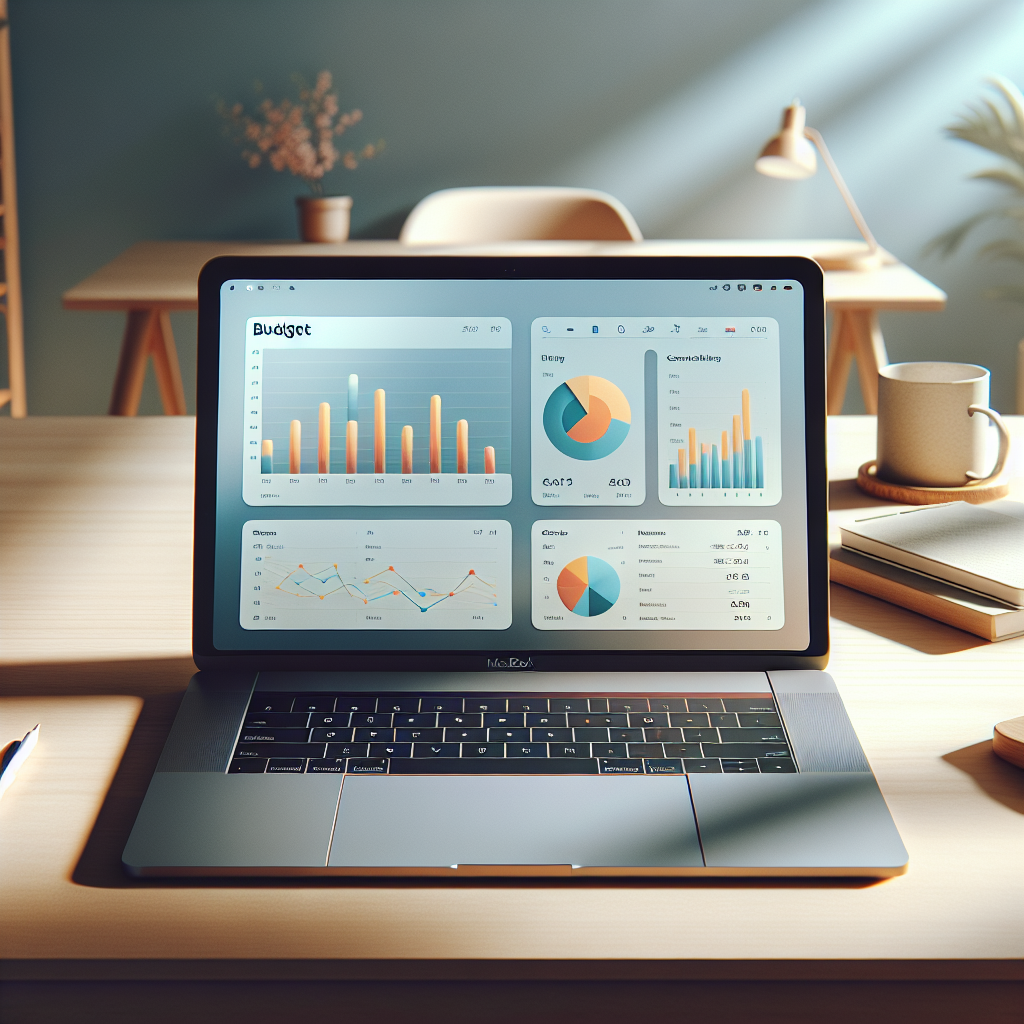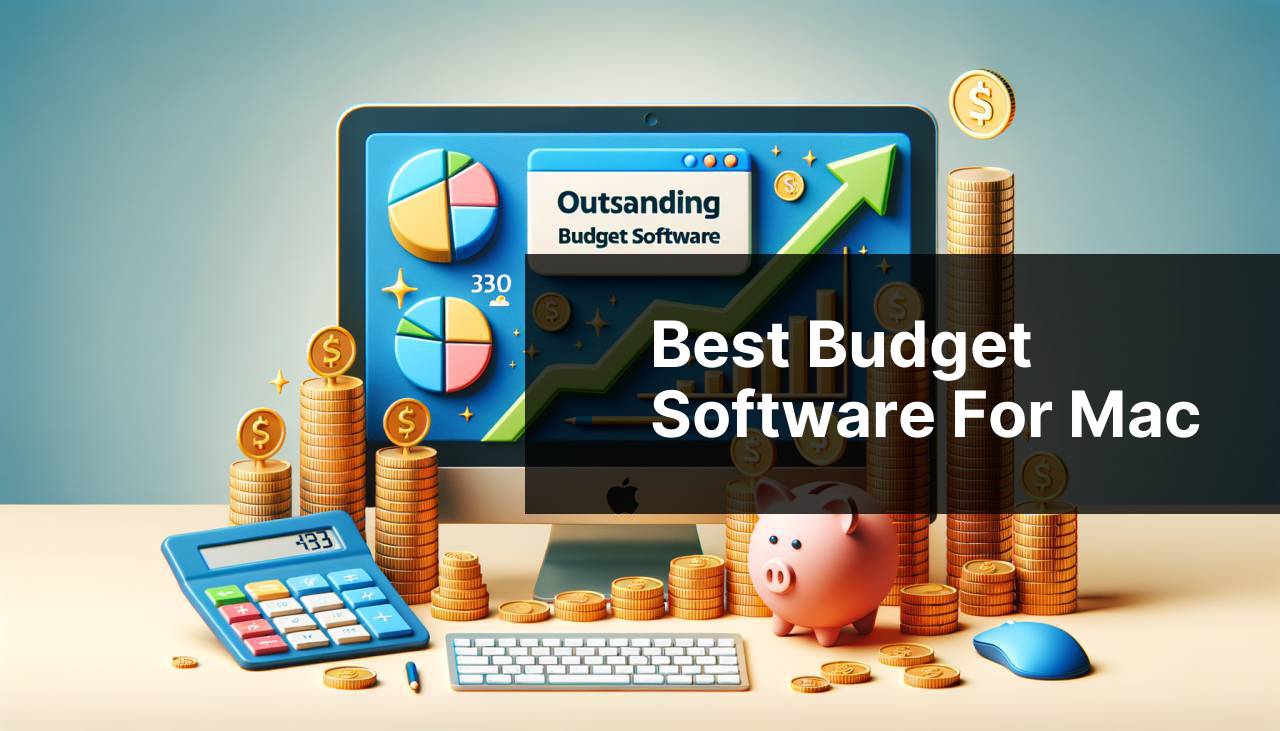In today’s fast-paced world, managing your finances efficiently is more important than ever. With the advent of technology, tools like your MacBook can make this task straightforward and even enjoyable. Whether you’re an individual looking to track personal expenses or a small business owner aiming to manage your company’s finances, a budget planner on your MacBook can serve as a powerful resource. The key is to utilize the right tools and strategies to make budgeting not only easy but also effective.
Budget planning on a MacBook offers a seamless experience, thanks to its robust ecosystem of applications and software. With intuitive interfaces and powerful functionalities, you can effortlessly monitor your spending, set savings goals, and even forecast future expenses. Using a MacBook elevates the experience by providing a sleek, user-friendly platform that integrates with various financial tools and apps, enhancing your ability to keep your finances organized.
Getting started with a budget planner on your MacBook involves choosing the right software that aligns with your financial goals. From simple spreadsheet templates to comprehensive financial management apps, your MacBook offers a wide range of options to suit your specific needs. By customizing these tools, you can tailor your budget plan to reflect your lifestyle and financial aspirations.
**Ready to take control of your finances and experience effortless savings?** Download Vala today and start managing your budget with ease!
Benefits Of Using MacBook For Budgeting

Using a MacBook for budgeting offers a myriad of benefits that streamline your financial management process. One of the most significant advantages is the **seamless integration** with Apple’s ecosystem, allowing you to sync your budget planner with other Apple devices, such as iPhones and iPads. This synchronization ensures that your financial data is constantly updated and accessible at your fingertips, wherever you are.
MacBooks are renowned for their **user-friendly interface** and robust performance, which makes managing complex financial data a breeze. The high-resolution Retina display provides clarity and precision, making it easier to analyze spreadsheets and financial reports. Additionally, MacBooks are equipped with advanced security features, such as Touch ID and encryption, ensuring that your sensitive financial information remains protected.
Furthermore, MacBooks support a wide array of **budgeting apps and software**, ranging from simple expense trackers to comprehensive financial management tools. This versatility means you can choose the right application that fits your budgeting style and requirements. Many of these apps offer features like automated expense categorization, bill reminders, and financial goal tracking, which can significantly enhance your budgeting efforts.
Additionally, the **macOS operating system** is designed for efficiency and speed, allowing you to multitask effortlessly between different applications. This capability is particularly beneficial when managing your budget alongside other responsibilities, such as work or personal projects. With a MacBook, you gain a reliable partner in your journey towards financial stability and success.
Essential Tools And Apps For Budget Planning
When it comes to budget planning on your MacBook, leveraging the right tools and apps can make a substantial difference. One of the most popular choices is **Apple Numbers**, a powerful spreadsheet application designed to help you create detailed budgets, track expenses, and visualize your financial data through charts and graphs. Its intuitive design and seamless integration with other Apple products make it a favorite among Mac users.
For those seeking more specialized budgeting solutions, apps like **YNAB (You Need A Budget)** and **Mint** provide comprehensive platforms that cater to different financial needs. YNAB encourages proactive financial planning by allocating every dollar a job, while Mint offers a holistic view of your financial status by linking your bank accounts, credit cards, and bills. Both apps provide real-time updates and easy-to-understand insights into your spending habits, empowering you to make informed financial decisions.
Another essential tool for MacBook users is **Quicken**, a long-standing favorite for personal finance management. Quicken offers robust features, such as detailed reports, investment tracking, and bill management, making it suitable for users with more complex financial portfolios. Its Mac version is tailored to leverage the full potential of macOS, ensuring a smooth user experience.
For those who prefer simplicity, apps like **PocketGuard** and **Goodbudget** offer user-friendly interfaces with straightforward budgeting features. PocketGuard helps you keep an eye on your spending by showing how much you have left after accounting for bills, goals, and necessities, while Goodbudget uses the envelope budgeting method to allocate funds across different spending categories.
Utilizing these tools and apps on your MacBook can transform budgeting from a daunting task into a manageable and even enjoyable activity, helping you gain better control over your financial future.
Step-By-Step Guide To Create A Budget Planner

Creating a budget planner on your MacBook may seem daunting at first, but with a few simple steps, you can have a comprehensive planner that helps you track your finances effectively. Begin by opening **Apple Numbers** or your chosen budgeting app. Start a new spreadsheet or project, and label your columns with essential categories such as *income*, *fixed expenses*, *variable expenses*, *savings*, and *debts*.
Next, gather all your financial information. This includes pay stubs, bank statements, and bills. Input your income details into the designated column, ensuring you account for all sources, including side hustles or passive income. Then, list your fixed expenses, such as rent, utilities, and insurance, followed by variable expenses like groceries, dining, and entertainment. It’s crucial to be as accurate as possible to get a clear picture of your financial situation.
With your data organized, it’s time to set realistic financial goals. These could include saving for a vacation, paying off debt, or building an emergency fund. Assign a portion of your income to each goal, keeping in mind your overall financial picture. Use charts and graphs available in your app to visualize your budget, identify trends, and adjust your spending habits accordingly.
Review your budget planner regularly, ideally once a week, to ensure you’re on track. Make adjustments as needed, especially if your financial circumstances change. The key to a successful budget planner is consistency and adaptability, allowing you to manage your finances proactively.
By following these steps, you’ll be well on your way to mastering your finances and achieving your financial goals using your MacBook.
Tips For Effective Budget Management

Having a budget planner is just the beginning; managing it effectively is crucial to achieving financial success. Here are some tips to enhance your budget management skills and ensure your financial goals are met.
- Set Clear Goals: Define your short-term and long-term financial objectives. Whether it’s saving for a new gadget or building a retirement fund, having specific goals will keep you motivated and focused.
- Track Every Expense: It’s easy to overlook small purchases, but they can add up quickly. Keep a record of every expenditure, no matter how minor, to maintain an accurate budget.
- Review and Adjust Regularly: Your financial situation can change, and so should your budget. Regularly reviewing your planner allows you to make necessary adjustments, ensuring it remains relevant and effective.
- Prioritize Essential Expenses: Identify your non-negotiable expenses, such as housing and utilities. Prioritize these in your budget to ensure they’re covered before allocating funds to discretionary spending.
- Utilize Technology: Leverage budgeting apps and tools that can automate tracking and provide insights into your spending patterns. These tools can also remind you of upcoming bills and financial obligations.
By incorporating these tips into your budget management routine, you’ll be better equipped to handle financial challenges and opportunities. Consistency is key, so make budgeting a regular part of your lifestyle to enjoy improved financial health and peace of mind.
Maximize Your Financial Goals With MacBook

Your MacBook is more than just a device for work or entertainment; it’s a powerful tool that can help you maximize your financial goals. By utilizing its advanced features, you can streamline budgeting processes, make informed decisions, and track your financial progress with ease.
Start by exploring various budgeting software and applications available on your MacBook. These tools can automate your financial tracking, provide insights through detailed analytics, and help you set realistic savings targets. With a few clicks, you can monitor your expenses, categorize spending, and receive alerts for upcoming bills, ensuring you stay on top of your financial obligations.
Leverage Cloud Services: Utilize cloud-based storage options to securely save and access your financial data from anywhere. This ensures that your budget planner is always updated and accessible, whether you’re at home or on the go. Collaborate with financial advisors or family members by sharing relevant documents and updates in real-time.
Invest in learning resources and financial planning courses available online. Your MacBook can be your gateway to valuable financial education, empowering you to make informed decisions and optimize your budget effectively.
Ready to take control of your finances and experience effortless savings? Download Vala today and start managing your budget with ease! With Vala, you’ll be well-equipped to reach your financial goals and enjoy a more secure financial future.


